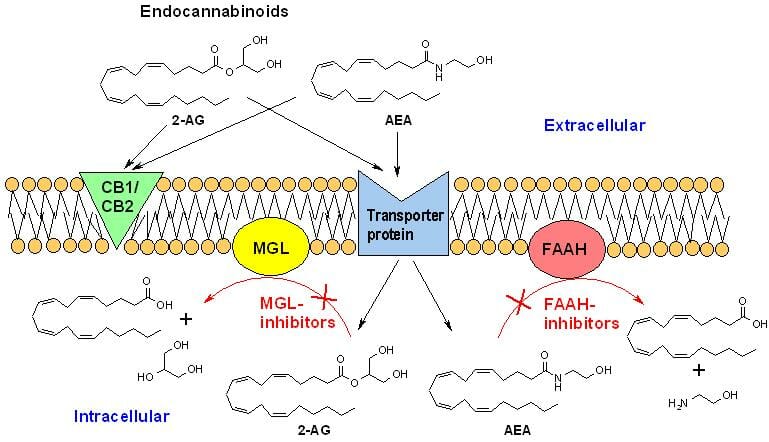Premium Hemp Products

Animals and humans have been consuming cannabis for thousands of years, and in the last 50 years enormous steps have been gained in our understanding of how cannabis works within the human body. While CBD, the first cannabinoid discovered in the 1940’s, it wasn’t until 1964 that things really began to take hold.
The isolation of THC in 1964 by Dr Mechoulam led researchers on a lengthy quest to find a receptor in the body with which cannabinoids may interact with. This discovery in our own bodies would not occur until the 1980’s. Those receptors were discovered to be a part of an enormous series of regulatory mechanisms, and have since been called the Endocannabinoid System. Many physiological effects of cannabis can be attributed to the interaction of the phytocannabinoids from the cannabis plant with these endocannabinoid receptors within ourselves.
The Endcocannabinoid System Network
Distributed throughout the entire body are a network of endocannabinoid receptors, which makes up the entirety of the endocannabinoid system (ECS). This is an extremely large and complex system, and is not exclusive to humans. In fact, nearly all complex animals, from fish to humans, have these receptors. The use of mice in many cannabinoid studies demonstrates the fact that they, too, have an endocannabinoid system. The ECS supports many diverse functions, such as memory, motor function, pain, appetite, blood pressure, digestion, and protection of neural matter. It is also believed that there is much more that we do not yet realize about the ECS and it’s functions in the body.
The Receptors
There are two main subcategories of ECS receptors: CB1 and CB2. Recent science has unearthed the possibility that there are more than just the known two receptors, like the GPR55 receptor. CB1 and CB2 receptor sites are found throughout the entire body, are very prominent in the brain, central nervous system, and immune system, and are also found in the tissues of organs like the gastrointestinal tract, reproductive and urinary systems, spleen, heart, and circulatory system.
Following the discovery of the receptors, a secondary search was on for substances produced within our own bodies that would bind to these places. Subsequent discoveries of cannabinoids that are produced within our own bodies, dubbed endocannabinoids, had been announced. Among those was Anandamide and 2-Arachidonoylglycerol.
Endocannabinoids appear to be derivatives of polyunsaturated fatty acids, and are closely related to the extremely popular Omega-3 fatty acids, which are most purchased as health supplements and are available and nearly any supermarket or health store today. Since they are fats, endocannabinoids are not friendly with water. The technical term for this is hydrophobic. They are, however, friendly with other fats, and this is called lipophilic.
Based on this knowledge, do you think it is possible that we are able to produce natural cannabis based products that can enhance or benefit our bodies as a whole, and promote overall wellness and vigor for our lives? Is there anything standing in the way of this dream?
Thank you for this useful info.